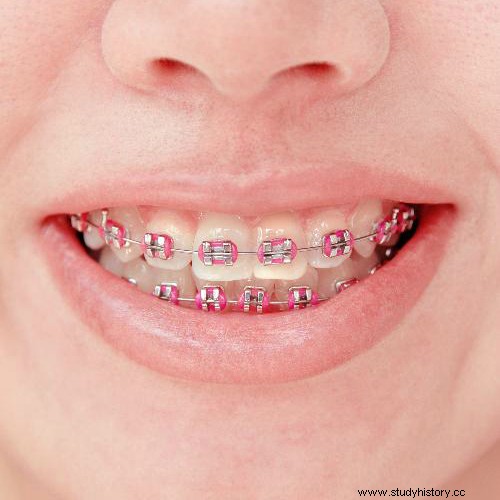
Improvements in the field of aesthetics currently produce an avalanche of novelties that seem to make our time unique. Makeup, creams, hair treatments, medications, surgeries seem to compose this universe focused on certain paradigms of beauty, harmony and perfection. However, few can imagine how this type of concern also affected men of other times.
To better understand this issue in the past, let's talk a little about the search for a “beautiful smile ”. Among the Greeks, this concern already took some of the studies and notes of Hippocrates and Aristotle . In their studies of the human body, both tried to develop a technique of tooth correction . Going further back in time, we have an Egyptian mummy , discovered by British scientists, that had a metallic foil attached to its crooked teeth .
In other cultures, the smile, in addition to being beautiful, should be immortal . Researchers who studied the Etruscan civilization , one of the oldest peoples of the Italian Peninsula , found that their dead had all their teeth attached to wooden stumps . Such a practice was intended to keep the smile of the deceased intact in his afterlife . Among the Romans, the physiologist Aurelius Cornelius indicated manual pressure as a technique to correct the dental arch.
In the medieval period, ideas aimed at the salvation of the spirit cared little whether the physical body had beautiful teeth or disheveled. Only in 18th century Europe, with the rationalist and empirical fever, new studies contributed to the emergence of orthodontics . In the year 1728, the publication “The Dental Surgeon”, by Pierre Fauchard , gave tips on how it would be possible to correct a patient's teeth.
In the same work, the French scholar presents a gadget formed by a metal piece in the shape of a horseshoe made to expand and thus better accommodate the teeth. The invention, called “bandeau”, is recognized as one of the first sketches of current dental appliances. Almost a century later, another Frenchman named Gaston Delebarre was responsible for the creation of that metal wire still used in orthodontic appliances.
Still in the 19th century, the dentist Joachim Lafoulon was responsible for creating the term that would designate this dental specialty as “orthodontics”. After that, “Treatise on Oral Deformities”, by the American Norman W. Kingsley pointed out new techniques that became a reference for orthodontic treatments until the first half of the 20th century. After that, orthodontic appliances became popular with the improvement in the manufacture of bands, brackets and wires.
Since then, the search for this type of treatment has been improved in order to camouflage the presence of the device itself. External devices, popularly called “donkey brakes ” caused a lot of embarrassment to people and, in many cases, discouraged others from going through the painful sessions of device maintenance. In the 1970s, new techniques allowed the direct bonding of brackets to the inner part of the dental arch.
One of the latest innovations in this field is the clear silicone aligners, which have transformed orthodontics into a virtually imperceptible treatment. . From then on, the many discomforts and injuries caused by metal braces were left behind. In this way, the search for the perfect smile does not require facing the “via crucis” that tormented those who were more vain or, perhaps, less courageous.
